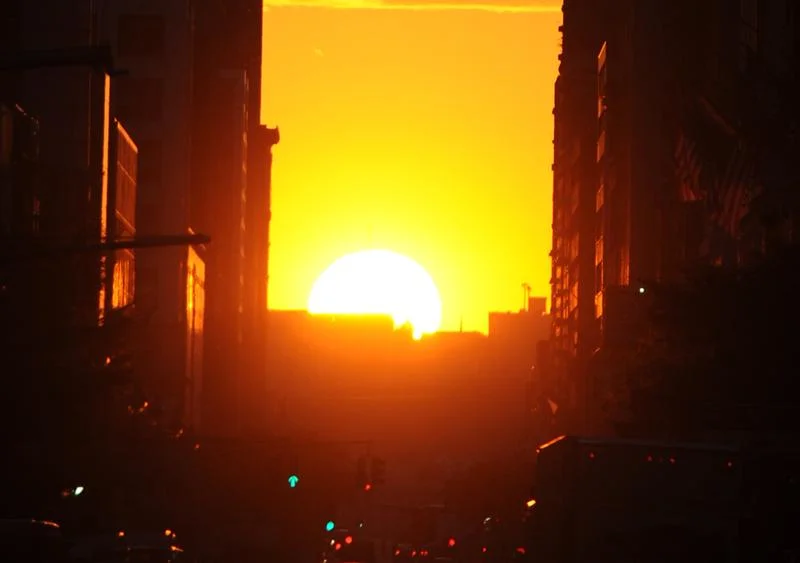
Manhattanhenge Returns: Catch the NYC Sunset Spectacle This May and July!
Get ready, New York City! The breathtaking phenomenon known as Manhattanhenge is making its return, offering residents and visitors alike a chance to witness a truly unique celestial event. This twice-yearly spectacle occurs when the setting sun aligns perfectly with Manhattan's street grid, creating a stunning display of light and shadow. Mark your calendars for dates in May and July!
According to Dr. Jackie Faherty, an astronomer at the American Museum of Natural History, Manhattanhenge is “astronomy in your face.” She eloquently describes it as: "The sun is beaming down the grid of Manhattan, and it’s a reminder that we’re on this rock that’s moving around. It’s an astronomy lesson that’s also a gorgeous sunset picture in the greatest city in the world."
When to Witness Manhattanhenge in 2025:
The best opportunities to view Manhattanhenge this year fall on these dates:
- Half Sun: Wednesday, May 28 at 8:13 p.m. and Saturday, July 12 at 8:22 p.m.
- Full Sun: Thursday, May 29 at 8:12 p.m. and Friday, July 11 at 8:20 p.m.
Faherty advises arriving 30-40 minutes early to secure a prime viewing spot and fully immerse yourself in the changing light as the sun makes its grand entrance.
Prime Viewing Locations:
For the most spectacular views, head to these east-west thoroughfares:
- 14th Street
- 23rd Street
- 34th Street
- 42nd Street (known as the "mecca" for Manhattanhenge, but expect crowds!)
- 57th Street
- Tudor City Overpass
- Hunter’s Point South Park in Long Island City, Queens
Remember, any location in the outer boroughs with a clear view towards New Jersey can also offer a great perspective.
The Science Behind the Spectacle:
The term "Manhattanhenge" was coined by astrophysicist Neil deGrasse Tyson. Unlike the equinoxes, when the sun aligns with the equator, Manhattanhenge occurs because Manhattan's street grid is rotated 30 degrees east from geographic north. As the American Museum of Natural History explains in a statement, "Had Manhattan's grid been perfectly aligned with the geographic north-south line, then the days of Manhattanhenge would coincide with the equinoxes."
Beyond Manhattanhenge: Other Celestial Delights
While Manhattanhenge is the star of the show, New Yorkers can also look forward to meteor showers throughout the season. Keep an eye out for the Eta Aquariids (peaking May 5-6), the Eta Lyrids (May 8), and the Perseids in August.
Also visible, the International Space Station, appearing as a bright, fast-moving object in the night sky, can be spotted nightly through May 13. NASA’s “Spot the Station” tracker has viewing times.
Don't miss your chance to witness this extraordinary event! What are your favorite Manhattanhenge viewing spots? Share your experiences and tips in the comments below!